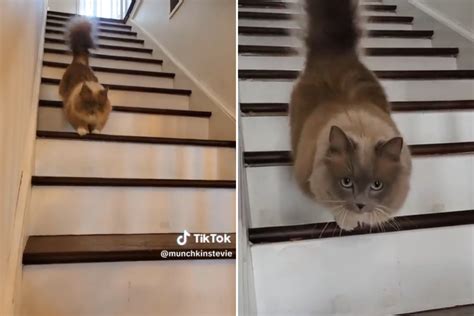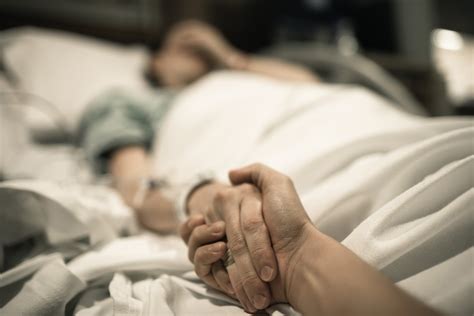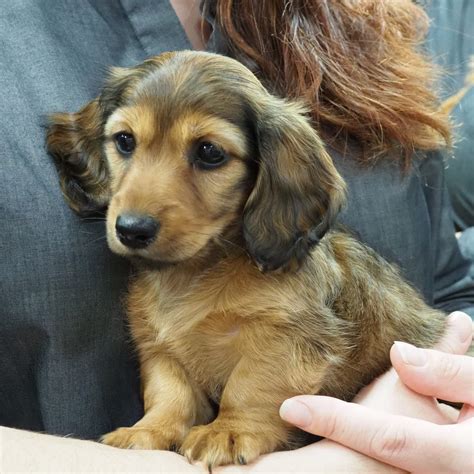
A Munchkin cat’s unusual gait, resembling a bunny hop when descending stairs, has captivated audiences online, turning the feline into an internet sensation. The cat’s short legs, a characteristic of the Munchkin breed, contribute to the distinctive movement, endearing it to viewers worldwide.
Videos of the cat navigating stairs have gone viral, showcasing its unique hopping motion, a direct result of its genetic mutation leading to shortened limbs. Social media users have expressed delight and amusement, flooding the comments sections with heart emojis and praising the cat’s adorable appearance. The viral nature of these videos underscores the internet’s fascination with animals exhibiting quirky and unconventional behaviors.
The Munchkin cat’s breed itself is a topic of considerable discussion and controversy. Developed in the 1980s, the breed is characterized by its short legs, a trait resulting from a naturally occurring genetic mutation. While proponents of the breed celebrate its distinctive appearance and perceived cuteness, critics raise concerns about potential health problems associated with the skeletal abnormality. This debate highlights the broader ethical considerations surrounding the breeding of animals with specific physical traits, particularly when those traits may compromise the animal’s well-being.
The genetic mutation responsible for the Munchkin cat’s short legs affects the long bones in the legs, causing them to be significantly shorter than those of typical domestic cats. This condition, known as achondroplasia or hypochondroplasia, can potentially lead to various health issues, including osteoarthritis, spinal problems, and difficulty with mobility. Breeders often argue that Munchkin cats are generally healthy and active, but veterinary experts caution that the breed’s genetic predisposition makes it susceptible to certain health complications.
The ethical considerations surrounding Munchkin cat breeding are multifaceted. Opponents of the breed argue that deliberately breeding cats with a known genetic defect that can cause pain and suffering is inherently unethical. They contend that the focus should be on promoting the health and welfare of animals rather than perpetuating traits that may compromise their quality of life. Proponents, however, maintain that Munchkin cats can live happy and fulfilling lives and that responsible breeding practices can minimize the risk of health problems. They also argue that the breed’s popularity reflects a genuine appreciation for its unique appearance and that responsible breeders prioritize the health and well-being of their cats.
The Munchkin cat’s rise to internet fame also raises questions about the role of social media in shaping perceptions of animal breeds and promoting certain types of pets. Viral videos and images can create a demand for specific breeds, sometimes without fully informing potential owners about the potential health challenges and care requirements associated with those breeds. This underscores the importance of responsible pet ownership and the need for individuals to conduct thorough research before acquiring any animal, particularly one with known genetic predispositions to health problems.
The viral video’s success is also attributable to the broader cultural fascination with cute and whimsical animal content. Social media platforms are replete with videos and images of animals engaging in amusing or heartwarming behaviors, providing a source of entertainment and emotional connection for millions of users. The Munchkin cat’s bunny-like hops tap into this cultural phenomenon, offering viewers a moment of lightheartedness and joy.
Beyond the immediate entertainment value, the Munchkin cat’s story also highlights the importance of understanding genetics and the potential consequences of selective breeding. The breed serves as a tangible example of how genetic mutations can affect an animal’s physical characteristics and overall health. By understanding the underlying science, individuals can make more informed decisions about pet ownership and advocate for responsible breeding practices.
Furthermore, the Munchkin cat’s popularity underscores the complex relationship between humans and animals. While many people are drawn to the breed’s unique appearance, it is crucial to consider the ethical implications of breeding animals for specific traits, particularly when those traits may compromise their well-being. Responsible pet ownership involves not only providing love and care but also advocating for the health and welfare of all animals.
The ongoing debate surrounding the Munchkin cat breed reflects broader discussions about animal rights, genetic engineering, and the role of humans in shaping the natural world. As technology advances and our understanding of genetics deepens, it is essential to engage in thoughtful and ethical discussions about the responsible use of these tools and the implications for the animals whose lives we affect. The Munchkin cat, with its viral bunny hops and inherent genetic challenges, serves as a compelling case study for these important conversations.
The Yahoo! Lifestyle article further elaborates on the social media frenzy. The video has garnered millions of views across platforms like TikTok, Instagram, and YouTube, with users leaving comments such as “So cute!” and “I can’t stop watching this.” The appeal seems to lie in the unexpected and almost comical way the cat navigates the stairs, its body seemingly defying gravity with each hop.
The article also touches on the health concerns often associated with Munchkin cats. While some breeders claim their cats live perfectly normal lives, veterinary professionals often caution potential owners to be aware of potential spinal issues and arthritis due to the shortened limbs. This inherent risk makes responsible breeding practices, including careful screening and genetic testing, absolutely crucial.
The article emphasizes the importance of doing thorough research before considering a Munchkin cat as a pet. Potential owners should be prepared to provide specialized care, including regular veterinary checkups and a supportive environment that caters to the cat’s unique physical needs. This includes ensuring easy access to food and water, providing ramps or steps to help the cat reach elevated surfaces, and being vigilant for any signs of discomfort or pain.
The surge in popularity driven by social media necessitates increased awareness and responsible pet ownership. While the “bunny hops” might be endearing, prospective owners must consider the long-term health and well-being of the animal before bringing it home. The internet fame should serve as a catalyst for education and informed decisions, not simply a superficial desire to own a trendy pet.
The American Society for the Prevention of Cruelty to Animals (ASPCA) and the Humane Society of the United States (HSUS) do not have official positions specifically on the Munchkin cat breed, but their general guidelines on responsible breeding and pet ownership strongly suggest that animal welfare should always be the top priority. These organizations advocate for the health and well-being of all animals and encourage potential pet owners to adopt from shelters and rescues whenever possible.
Furthermore, organizations like the Cat Fanciers’ Association (CFA) and the International Cat Association (TICA) do not recognize the Munchkin cat as a standard breed. This lack of recognition highlights the ongoing debate within the cat fancy community about the ethical implications of breeding cats with genetic mutations that may compromise their health. While some breeders continue to promote the Munchkin cat, others argue that it is not in the best interest of the animals to perpetuate this genetic trait.
The Munchkin cat’s story also illustrates the power of social media in shaping public opinion and influencing consumer behavior. The viral nature of the cat’s videos has undoubtedly contributed to its popularity, but it is important to remember that social media portrayals often present a curated and idealized view of reality. Potential pet owners should not rely solely on social media when making decisions about pet ownership but should instead seek out reliable information from reputable sources, such as veterinarians, animal welfare organizations, and experienced breeders.
The ethical considerations surrounding the Munchkin cat breed are not unique to this particular animal. Many other breeds of dogs and cats have been selectively bred for specific physical traits that can lead to health problems. For example, brachycephalic (short-nosed) breeds such as Bulldogs and Pugs are prone to breathing difficulties, while certain breeds of dogs are predisposed to hip dysplasia. These examples highlight the importance of considering the potential health consequences of breeding for specific traits and the need for responsible breeding practices that prioritize animal welfare.
The debate over the Munchkin cat breed is also relevant to broader discussions about genetic engineering and the manipulation of animal genomes. As technology advances, it may become increasingly possible to alter the genetic makeup of animals to create new breeds or modify existing ones. These possibilities raise complex ethical questions about the role of humans in shaping the natural world and the potential consequences of these interventions. It is essential to engage in open and informed discussions about these issues to ensure that genetic engineering is used responsibly and ethically.
Ultimately, the Munchkin cat’s story serves as a reminder of the importance of responsible pet ownership, ethical breeding practices, and the need for informed decision-making. While the cat’s “bunny hops” may be entertaining, it is crucial to consider the long-term health and well-being of the animal and to advocate for its welfare. By promoting responsible pet ownership and ethical breeding practices, we can help ensure that all animals have the opportunity to live happy and fulfilling lives. The Munchkin cat, with its unique appearance and inherent genetic challenges, serves as a valuable case study for these important conversations.
The Yahoo! article included a video showing the cat navigating the stairs. This visual element significantly contributes to the impact of the story, allowing viewers to witness the distinctive gait firsthand and understand why it has captured so much attention. The combination of the cat’s small stature and the unusual hopping motion creates a compelling visual narrative that resonates with viewers across different demographics.
The article also highlights the importance of providing a safe and supportive environment for Munchkin cats. Due to their short legs, these cats may have difficulty jumping or climbing, which can limit their access to certain areas of the home. Owners should consider providing ramps or steps to help their cats reach elevated surfaces and should also ensure that the environment is free of hazards that could cause injury. This includes securing loose wires, covering sharp edges, and providing soft landing areas in case the cat falls.
In addition to physical accommodations, Munchkin cats also require regular veterinary care to monitor their health and address any potential problems. Veterinarians may recommend specific exercises or therapies to help maintain the cat’s mobility and prevent the development of osteoarthritis. It is also important to be vigilant for any signs of pain or discomfort and to seek veterinary attention promptly if any problems arise.
The Munchkin cat’s popularity also raises questions about the role of breeders in promoting responsible pet ownership. Breeders have a responsibility to educate potential owners about the potential health challenges associated with the breed and to provide ongoing support and guidance. They should also be transparent about their breeding practices and be willing to answer questions from potential owners. Responsible breeders prioritize the health and well-being of their cats and are committed to producing healthy and well-socialized kittens.
The Munchkin cat’s story also serves as a reminder of the importance of adopting from shelters and rescues. Millions of cats and dogs are euthanized each year because there are not enough homes for them. Adopting a pet from a shelter or rescue not only saves a life but also helps to reduce the demand for commercially bred animals, which can contribute to overpopulation and unethical breeding practices. Potential pet owners should consider adopting a cat or dog from a shelter or rescue before purchasing an animal from a breeder.
The ethical considerations surrounding the Munchkin cat breed are complex and multifaceted. There is no easy answer to the question of whether it is ethical to breed cats with genetic mutations that may compromise their health. However, by engaging in open and informed discussions about these issues, we can help to ensure that all animals are treated with respect and compassion. The Munchkin cat, with its unique appearance and inherent genetic challenges, serves as a valuable case study for these important conversations.
Ultimately, the Munchkin cat’s story is a reminder of the power of social media to shape public opinion and influence consumer behavior. While the cat’s “bunny hops” may be entertaining, it is crucial to consider the long-term health and well-being of the animal and to advocate for its welfare. By promoting responsible pet ownership and ethical breeding practices, we can help ensure that all animals have the opportunity to live happy and fulfilling lives.
The continuous rise in online pet content has amplified the demand for unique and “cute” breeds, occasionally overshadowing the animals’ welfare. It’s important for people to remember that pet ownership is a lifetime commitment and not a fleeting trend influenced by what’s popular online. This commitment should come with a solid understanding of the breed’s potential health issues and specific needs.
The Munchkin cat controversy brings up a much bigger issue in the pet industry – the ethics of breeding for appearance over health. Many breeds, not just cats, suffer from genetic conditions because of selective breeding for exaggerated features. This includes dogs like pugs with breathing problems and German Shepherds prone to hip dysplasia. This calls for better breeding regulations and a shift in consumer preference towards healthier breeds or mixed-breed animals.
While some argue responsible breeders can minimize health risks in Munchkin cats, the question remains whether intentionally breeding for a trait known to cause potential health issues is truly ethical. This touches upon the fundamental principle of “do no harm” and the responsibility breeders have to prioritize the animal’s well-being above aesthetic preferences.
The Munchkin cat’s story isn’t just about one particular breed. It’s a reflection of our society’s evolving relationship with animals, the impact of social media on consumer behavior, and the urgent need for a more ethical and responsible approach to pet ownership and breeding. As we continue to share and consume animal content online, it’s vital to remember the real animals behind the screens and advocate for their welfare, not just their online popularity.
Frequently Asked Questions (FAQ)
-
What makes a Munchkin cat’s movement unique and why is it described as a “bunny hop”?
- Munchkin cats possess shortened limbs due to a genetic mutation, specifically affecting the long bones in their legs. This characteristic causes them to move in a manner that resembles a bunny hop, especially when descending stairs, because they compensate for the short legs with a distinctive hopping motion. The visual of the cat moving this way has captured significant attention online, leading to its viral status.
-
What are the primary health concerns associated with Munchkin cats, and what should potential owners be aware of?
- The main health concerns for Munchkin cats revolve around their shortened limbs. They may be prone to developing osteoarthritis, spinal problems, and other mobility-related issues. Potential owners should be prepared for specialized care that includes regular veterinary checkups, a supportive environment adapted to the cat’s physical needs (e.g., ramps for accessibility), and close monitoring for signs of pain or discomfort.
-
Why is there ethical controversy surrounding the breeding of Munchkin cats, and what are the arguments on both sides?
- The ethical controversy stems from concerns that breeding cats with a known genetic mutation leading to shortened limbs could compromise their well-being. Opponents argue that deliberately breeding for this trait is unethical, as it may predispose the cats to health problems and pain. Proponents, however, assert that Munchkin cats can lead happy lives and that responsible breeding practices can minimize potential health risks. They also emphasize the demand for the breed and the importance of responsible breeders meeting that demand while prioritizing the cats’ health.
-
What role has social media played in the Munchkin cat’s popularity, and how does this impact responsible pet ownership?
- Social media has significantly amplified the Munchkin cat’s popularity by showcasing the breed’s unique appearance and behavior through viral videos and images. This heightened exposure can create increased demand, but it’s crucial that potential owners are well-informed about the potential health challenges and care requirements associated with the breed. Responsible pet ownership requires thorough research and informed decision-making, not just a superficial desire to own a trendy pet. Social media should serve as a catalyst for education and awareness, not simply for impulsive pet acquisitions.
-
What do major animal welfare organizations and cat fancy associations say about the Munchkin cat breed, and what are their recommendations?
- Organizations like the ASPCA and HSUS haven’t released specific statements about the Munchkin cat breed, but they advocate for prioritizing animal welfare in breeding practices. Organizations like the Cat Fanciers’ Association (CFA) and The International Cat Association (TICA) do not recognize the Munchkin cat as a standard breed. Their general guidance on responsible pet ownership emphasizes the importance of health, responsible breeding, and adopting from shelters. Potential pet owners should research from reliable sources such as veterinarians and shelters. These organizations support the ethical treatment of animals.








